|
|
|
|
[Index]
[Back] |
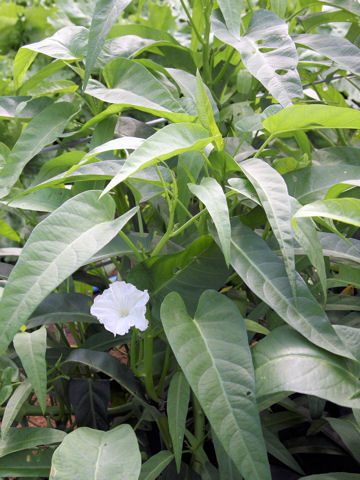 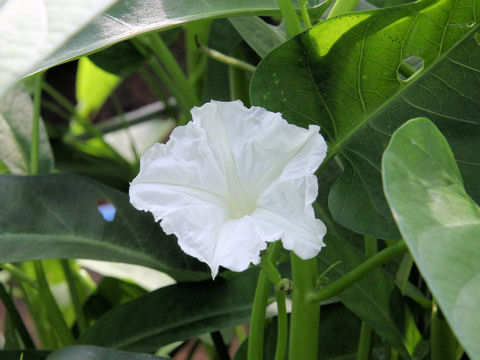 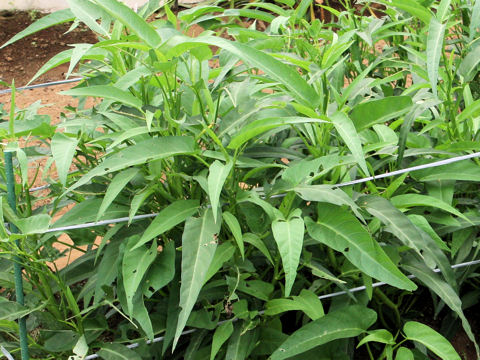 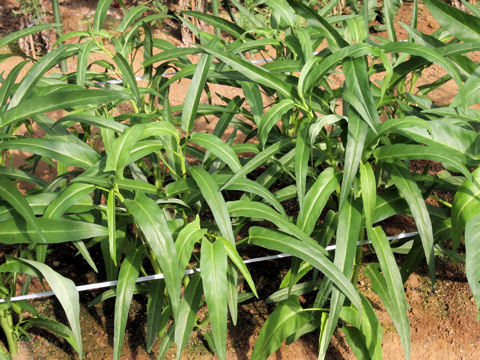 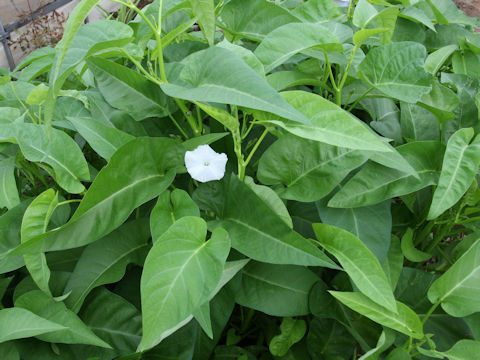 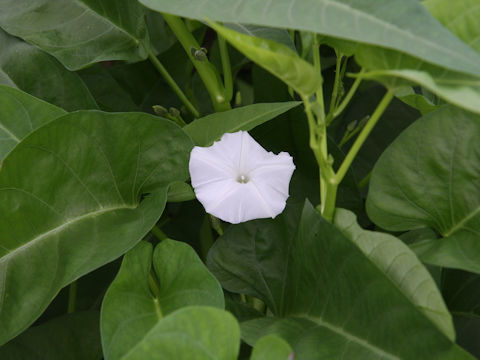 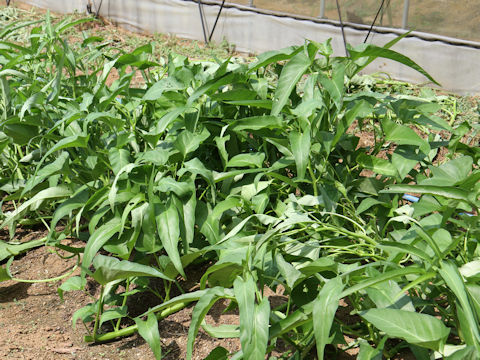 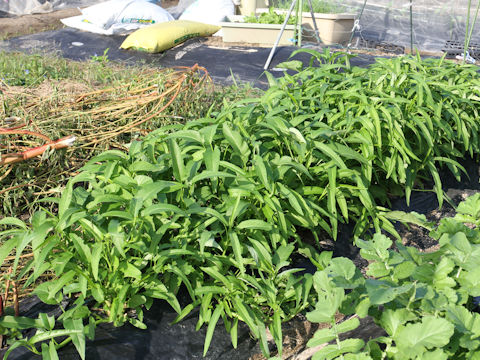 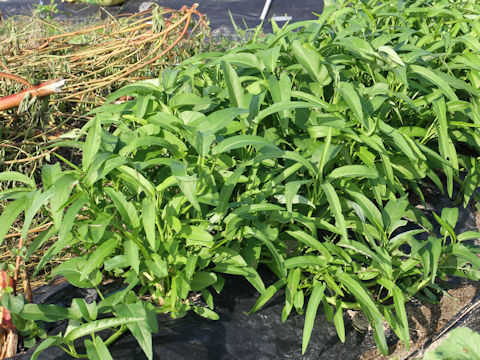 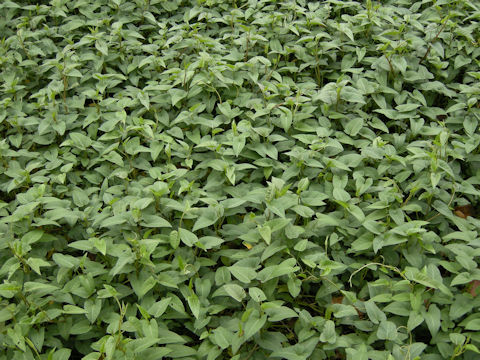 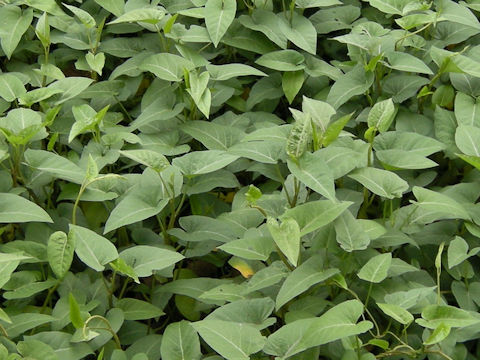 |
|
|
|
東南アジアが原産です。わが国へは沖縄を経て、古くに渡来しました。蔓性で湿地や水辺に生え、茎は中空で地面を這って長く伸びます。葉は披針形や長卵形、長楕円形などで、互生します。晩秋に葉腋から花序をだし、淡紫色から白色の直径5センチほどの漏斗形の花を咲かせます。茎葉は炒め物やお浸し、和え物などに利用されます。別名で、「くうしんさい(空心菜)」や「えんさい(筵菜)」とも呼ばれます。台湾華語では「甕菜」、中国語では「蕹菜(weng cai)」と呼ばれます。 |
|
|
ヒルガオ科サツマイモ属の多年草で、学名は Ipomoea aquatica。英名は Swamp morning glory、Water spinach。 |
|
|
The Swamp morning glory (Ipomoea aquatica) belongs to Convolvulaceae (the Bindweed family). It is a perennial herb that is native to Southeast Asia. It was introduced into Japan via Okinawa in ancient days. This herb is vine and grows in bogs or water's edges. The stems are long, mid-air and crawl on the grounds. The leaves are lanceolate, long-ovate or oblong, and arranged in alternate. The flowering clusters are borne on the axils, and the pale purple to white, about 5 cm across, funnel-shaped flowers bloom in late fall. The leaves are usually stir fried, boiled green or marinated food. In Taiwanese Chinese, it is called "甕菜" and in Chinese "蕹菜" (weng cai). |
|
|
[上・中1] 千葉県香取市大角にて、2011年11月07日撮影。 [中2] 同上にて、2011年10月19日撮影。 [中3] 同上にて、2011年09月16日撮影。 [中4・中5] 同上にて、2012年10月18日撮影。 [中6] 同上にて、2014年08月22日撮影。 [中7・中8] 福岡県須惠町旅石にて、2017年10月08日撮影。 [中9・下] ベトナム・ハノイ市にて、2009年03月01日撮影。(photo by Jon Suehiro) |
|
|
|
Shu Suehiro |